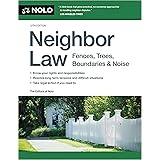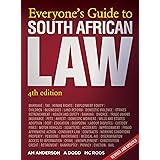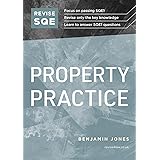Many aspiring homeowners face a common hurdle: the belief that they need a hefty 20% down payment to purchase a house. This widely held idea often discourages people from even starting their homeownership journey. However, as the video above eloquently debunks, waiting years to save such a substantial sum is often unnecessary. In reality, a 20% down payment to buy a house is a myth for many, and there are numerous paths to securing a mortgage with significantly less upfront capital.
The truth is, while a larger down payment certainly offers benefits, it is by no means a mandatory requirement. This pervasive myth keeps countless individuals from exploring their options and realizing their dream of owning a home. Let’s delve deeper into why this myth persists and, more importantly, how you can navigate the real estate market with various low-down-payment mortgage options.
Addressing the 20% Down Payment Myth Head-On
The notion that you absolutely need 20% down to buy a house has deep roots, often stemming from conventional wisdom that prioritizes minimizing debt and maximizing equity from day one. For decades, it was the standard advice. However, the mortgage landscape has evolved dramatically, introducing more flexible and accessible financing solutions. While a 20% down payment is advantageous – it can lead to lower monthly payments and eliminate Private Mortgage Insurance (PMI) – it’s crucial to understand that it’s a financial choice, not a prerequisite for homeownership.
Think of it like this: needing 20% down is similar to believing you need a luxury car to get to work. While a luxury car might offer certain comforts and features, a reliable, affordable vehicle will get you to the same destination just as effectively. The key is to find the right vehicle (or mortgage) that fits your current circumstances and future goals.
Unpacking Private Mortgage Insurance (PMI)
One of the primary reasons the 20% down payment is so often emphasized is its connection to Private Mortgage Insurance (PMI). When you put down less than 20% on a conventional loan, lenders typically require PMI. This insurance protects the lender, not you, in case you default on your mortgage. It’s an additional monthly cost that some homebuyers prefer to avoid, contributing to the allure of the 20% down payment.
However, it’s important to view PMI as a trade-off, not a roadblock. While it adds to your monthly housing expense, it also enables you to purchase a home sooner. Many homeowners find that the benefits of building equity and enjoying the stability of homeownership outweigh the temporary cost of PMI. Furthermore, PMI can often be canceled once you reach a certain equity threshold (typically 20-22%) in your home, either through appreciation or by paying down your principal. This means it’s not a lifelong burden, but a stepping stone to full equity ownership.
Exploring Low Down Payment Mortgage Options
The good news is that the market offers several robust loan programs designed specifically for individuals who don’t have a large down payment saved. These options make homeownership a reality for a broader range of buyers, including many first-timers.
1. FHA Loans: A Stepping Stone for Many
FHA loans, insured by the Federal Housing Administration, are a popular choice for first-time homebuyers and those with less-than-perfect credit. As highlighted in the video, these loans require a minimum down payment of just 3.5%. This means if you’re looking at a $300,000 home, your down payment could be as low as $10,500. FHA loans also have more flexible credit score requirements compared to conventional loans, opening doors for more applicants.
Consider the impact: saving $10,500 is significantly more achievable for many individuals and families than saving $60,000 (which would be 20% of a $300,000 home). This accessibility makes FHA loans a powerful tool for accelerating your path to homeownership.
2. Conventional Loans: Flexibility and Choice
While often associated with the 20% down rule, conventional loans actually offer options with much lower down payments. Many conventional loan programs allow you to put down as little as 3%. This means for that same $300,000 home, your down payment could be $9,000. These loans are not government-insured but follow guidelines set by Fannie Mae and Freddie Mac.
The catch with low-down-payment conventional loans is typically stricter credit score requirements compared to FHA loans, and they usually come with PMI until you build sufficient equity. However, for those with good credit, a 3% down conventional loan can be an excellent and flexible financing solution.
3. VA Loans: A Thank You to Our Veterans
For eligible service members, veterans, and surviving spouses, VA loans are an incredible benefit, offering 0% down payment options. These loans are guaranteed by the U.S. Department of Veterans Affairs and do not require private mortgage insurance, even with no money down. This makes VA loans one of the most powerful and cost-effective ways to buy a home for those who qualify.
The video rightly thanks our veterans for their service, and VA loans are a tangible way to express that gratitude, removing a significant financial barrier to homeownership for those who have sacrificed so much.
4. USDA Loans: Supporting Rural Homeownership
Another fantastic 0% down payment option, often overlooked, is the USDA loan. Backed by the U.S. Department of Agriculture, these loans are designed to promote homeownership in eligible rural and suburban areas. While they come with income limits and geographic restrictions, for qualifying buyers, USDA loans are a tremendous resource that requires no money down and often features competitive interest rates.
These loans are not just for farmers; many suburban areas fall within USDA-eligible zones. It’s worth exploring if your desired location qualifies and if your income meets the program’s guidelines.
Beyond Loans: First-Time Homebuyer Grants and Programs
In addition to the specific loan types, many states, counties, and even cities offer first-time homebuyer grants and assistance programs. These programs can provide funds for down payments, closing costs, or even both. Some grants don’t need to be repaid, while others are low-interest loans or deferred payment loans that are forgiven after a certain number of years if you stay in the home.
These programs are like finding extra pieces to a financial puzzle. They can significantly reduce your out-of-pocket expenses, making the path to homeownership even smoother. It’s always wise to research what local and state programs are available in your area.
Your Smart Plan to Homeownership
The core message here is clear: don’t let the 20% down payment myth deter you. Instead, adopt a proactive and informed approach. What you truly need is a smart plan tailored to your financial situation and the right real estate and mortgage professionals guiding you. These experts can help you:
- Evaluate your credit score and help you improve it if necessary.
- Assess your current financial standing to determine what you can comfortably afford.
- Explore all available loan options, from FHA and Conventional to VA and USDA, as well as local assistance programs.
- Understand the long-term implications of each option, including PMI and interest rates.
- Craft a realistic budget for homeownership, including all associated costs.
Homeownership is an attainable dream for many, often sooner than they imagine. By understanding the various loan options and leveraging expert advice, you can bypass the illusion of needing a huge savings account and instead focus on a strategic path forward. Don’t wait years thinking you need a massive down payment to buy a house; empower yourself with knowledge and the right team to make homeownership a reality.









